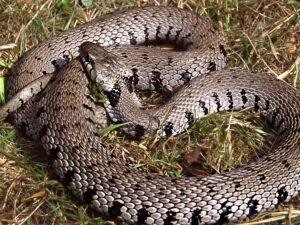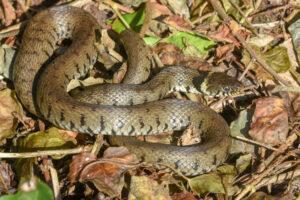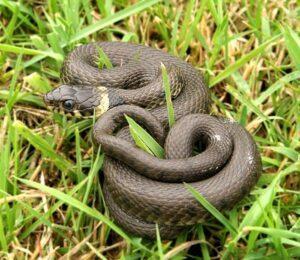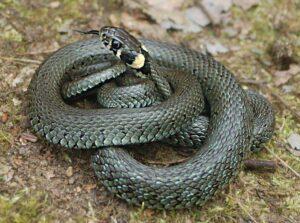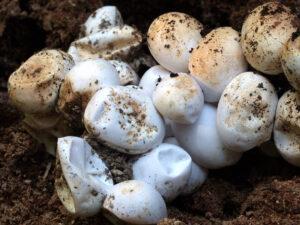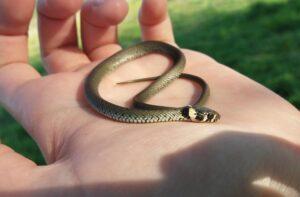The grass snake is also known as the common grass snake, ringed snake and water snake. Though one of its common names leads people to believe it is exclusive to water, it can survive an entire season out of it. Nevertheless, there are high chances of finding the excellent swimmer close to freshwater.
Scientific Classifications
- Suborder:Serpentes
- Family:Colubridae
- Genus:Natrix
- Species:N. natrix
Conservation Status
Subspecies
This snake has ten recognized subspecies.
- Natrix natrix algirus
- Natrix natrix astreptophora
- Natrix natrix calabra
- Natrix natrix cypriaca
- Natrix natrix fusca
- Natrix natrix gotlandica
- Natrix natrix natrix
- Natrix natrix persa
- Natrix natrix schweizeri
- Natrix natrix scutata
Description
Size
An adult ring snake can get 3 ft 3 inches (1 m) in length or longer.
Color and Appearance
Grass snakes are typically dark green or brown with a characteristic whitish or yellow collar marking behind their heads that has earned them the name ringed snake. They are darker in color, ranging from gray to black in the colder regions. Their ventral side is whitish with irregular black blocks that help identify individuals.
Are They Dangerous to Humans
The common grass snake avoids conflict and is harmless. If cornered, it can puff up its body, hiss loudly and even strike, albeit with a closed mouth. It can also get aggressive when molting as it is pretty fragile at that time. Playing dead and musking are its other defense mechanisms. But it seldom bites in self—defense and tries escaping instead. Its bite can’t kill you as it is non-venomous, but it can be quite infectious.
Grass Snakes at a Glance
Distribution
They can be found in a broad region in mainland Europe from mid-Scandinavia to south Italy and in northwestern and middle-eastern Africa.
Predators
The colubrid has a variety of predators like storks, corvids, owls, foxes, and domestic cats, to name a few.
Diet
Ring snakes mainly eat amphibians, the common toad and common frog, in particular, using their sense of smell and sight for hunting actively. They may occasionally take larvae, ants, and earthworms but don’t eat dead creatures. They ingest their prey alive, holding on to it with their teeth that curve inwards without constricting it. As the kill is often comparatively larger than the snake’s size, it limits its movements to a great extent after a meal.
Reproduction
Oviparous (lays eggs that hatch outside the body)
The males emerge from hibernation first in spring and bask to increase their body temperature to enhance their metabolism and sperm production. Mating occurs as soon as the females emerge a couple of weeks later or earlier if conditions are favorable. The females seek manure and compost heaps, piles of decaying leaves, and reeds as their nesting places. They lay leathery-skinned eggs of 25-30 mm size in batches of 8-40 in June-July. The eggs hatch in around 10 weeks. The babies are 7 inches (18 cm) long and fully independent.
Ans. No, grass snakes are usually wild-caught and don’t make good pets as they face a lot of difficulty feeding. They are used to catching their prey and eating it live. They struggle to adapt themselves to frozen or thawed prey. The wild snake also dislikes handling and can spread diseases to other captives.
If you really want it as a pet, get a juvenile one or a captive-bred grass snake. They socialize, feed better, and can be handled without musking.
Source
i.guim.co.uk, images.squarespace-cdn.com, images.immediate.co.uk, scx1.b-cdn.net, reddit.com

